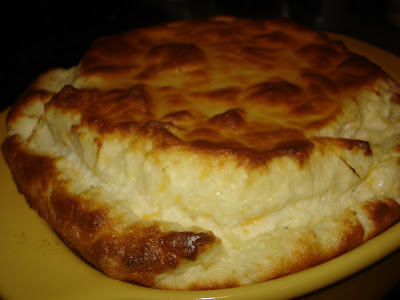I'm not a huge red meat eater. Most of the time, I am content eating pasta, chicken, veal, fish, grains, fresh fruit etc . . . As long as everything is farm fresh and organic, I don't need a ton of red meat in my died. But every so often, once or twice a month, I get a craving for red meat. I like my meat lean, fresh and organically raised, but yes, I do enjoy a meal centered around a nice cut of red meat every so often, whether it is steak, short ribs, brisket or braised stew beef like a beef bourguignon. I am disappointed when my bi-monthly red meat indulgence is not a good lean cut of meat, because there is nothing I detest more than excess fat. For last night's dish, I prepared boneless short ribs, which were a wonderful lean cut from Fresh Direct. I braised the short ribs in a braising solution that was pretty much a mixture of a full bodied red wine and chicken stock, with plenty of herbs and vegetables mixed in. I always add a small amount of tomato paste to my braises for flavor. I generally avoid adding more tomatoes than that though, otherwise the sauce is too heavy and overpowering.
For tonight's dinner, I paired a full bodied wine to complement the red meat, the 2007 Cabernet Franc that I received from Wagner Vineyards, a Seneca Lake Winery which is well known as one of the top Riesling producers in the Finger Lakes
Wagner Vineyards' 2007 Cabernet Franc was quite delightful. It was a full-bodied wine that had hints of berries - mostly cherry and perhaps a bit of red currant. It wasn't too dry, but had just a bit of a burst of cherry and a pleasant aroma. I thought that it paired nicely with the red meat and the wine complement of the sauce.
Sasha's Braised Beef Short Ribs
2 cups dry red wine (either use Cabernet or a red cooking wine)
2 1/2 quarts of organic, low sodium chicken stock or beef stock (I used chicken stock)
4 T canola oil
8-9 boneless beef short ribs (about 3 to 3.5 pounds)
salt to season
pepper to season
flour or matzo meal for dredging (use flour, unless you are doing this during Passover)
10 cloves of garlic, diced
1 onion, diced
3 large handfulls of baby carrots
2 stalks of celery, cut into small pieces
1 medium leek, coarsely chopped
1/4 cup parsley
2 tsp diced ginger
2 bay leaves
1/4 cup parsley
3 T tomato paste
2 sprigs of thyme
1 sprig rosemary
Heat half of the oil in a large Dutch Oven
Using the same pot, add the vegetables and herbs. Add the remaining Canola Oil and brown the vegetables lightly for about 7-8 minutes. Then stir in three tablespoons of tomato paste. Add the wine, chicken stock and seared beef short ribs to the pot. Bring to a boil and then cover the pot and put it in an oven that has been preheated to 350 degrees. Braises the ribs for about two and a half hours in the oven. When you open the pot, they should be tender and fall apart when you cut them with your fork. You can serve with the sauce as is (we did and it was great) or you can reduce the sauce if you prefer a thicker sauce to accompany the meat.



 Short Ribs
Short Ribs



















